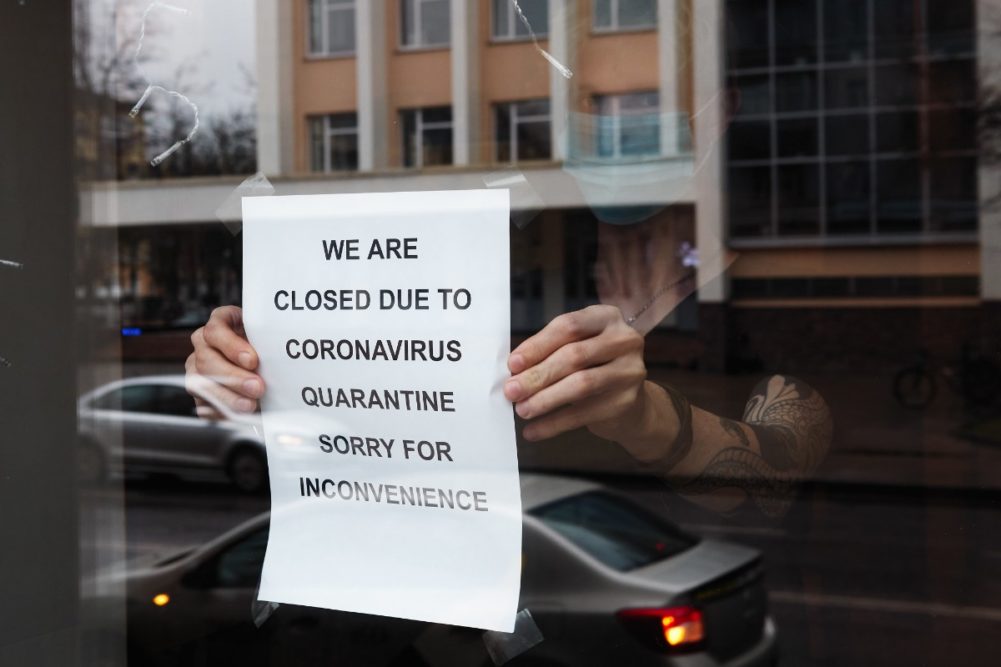KANSAS CITY — President Donald Trump on March 16 issued guidelines calling on Americans to avoid social gatherings of more than 10 people and avoid discretionary and non-essential travel. The guidelines, which currently are recommended but not mandated, also ask students to take classes from home if possible.
The president asked governors in states with COVID-19 cases to close schools, bars, restaurants, food courts, entertainment and other recreational venues to help limit the outbreak.
The government has not implemented a national quarantine or curfew, but the president said Americans in all states could face restrictions through July or August.
Federal actions
March 20
The US State Department raised its travel advisory worldwide to Level 4: Do Not Travel. The advisory instructs citizens not to travel abroad and mandates that Americans currently overseas return to the country or shelter-in-place.
March 19
President Trump announced the United States will temporarily close its northern border to all “non-essential” traffic. Canada is denying entry to anyone who isn’t a citizen or permanent resident to prevent the spread of the outbreak.
President Trump announced the United States-Mexico border will close for non-essential travel.
March 18
On March 11, the United States barred entry of all foreign nationals who had visited China, Iran and countries in the Schengen Area (Austria, Belgium, Czech Republic, Denmark, Estonia, Finland, France, Germany, Greece, Hungary, Iceland, Italy, Latvia, Liechtenstein, Lithuania, Luxembourg, Malta, Netherlands, Norway, Portugal, Slovakia, Spain, Sweden and Switzerland.
On March 16, the entry ban expanded to foreign nationals departing from the United Kingdom and Ireland.
Beginning March 13, all American citizens and legal permanent residents returning to the United States from high-risk areas are required to fly to one of 13 airports: Boston-Logan International Airport, Chicago O’Hare International Airport, Dallas/Fort Worth International Airport, Detroit Metropolitan Airport, Daniel K. Inouye Airport (Hawaii), Hartsfield-Jackson Atlanta International Airfield, John F. Kennedy International Airport (New York), Los Angeles International Airport, Miami International Airport, Newark Liberty International Airport, San Francisco International Airport, Seattle-Tacoma International Airport, Washington-Dulles International Airport.
State Actions
March 20
Texas Governor Greg Abbot issued an executive order on March 19 banning dine-in services at all restaurants and food establishments across the state. Governors in Alabama and Arkansas also ordered restaurants to switch to takeout, delivery and drive-thru only. Virginia instituted a strict 10-person limit for restaurant dining rooms. Maximum occupancy limitations in California and New Mexico are now outright bans on in-store consumption.
March 19
Food establishments in Alaska have closed for in-store consumption after the sixth confirmed case of COVID-19 was reported in the state. Restaurants and bars in Hawaii and Maine were ordered to switch to take out, delivery and drive-thru only.
March 18
States including Illinois, Indiana, Kentucky, Massachusetts, New Jersey, New York, Pennsylvania, Ohio and Washington have ordered restaurants to close for on-site consumption and provide take-out and delivery services only. New Mexico has ordered all food establishments to operate at no more than 50% maximum occupancy. California announced all bars, wineries, nightclubs and brewpubs will close temporarily. Restaurants in the state may remain open but are required to reduce maximum occupancies and keep tables six feet apart.
March 20
New York Governor Andrew Cuomo signed an executive banning all nonessential travel and mandating that all non-critical employees stay at home. Industries including shipping, warehousing, grocery and food production, pharmacies and healthcare are exempt. The directive, called New York State on Pause, will take effect Sunday, March 22. All “non-life sustaining” businesses in Pennsylvania, including specialty food stores, have been ordered to close their physical locations. Exceptions include farms, bakeries, dairy product manufacturers and grocery stores. Enforcement against violators will begin on Saturday, March 21.
California Governor Gavin Newsom on March 19 ordered all of the state’s nearly 40 million residents to stay home. The mandate, which is the strictest in the nation so far, comes with misdemeanor penalties for violators. The governor said it largely will be enforced through social pressure. Essential travel, including trips to pharmacies and grocery stores, are exempt.
Alabama Governor Kay Ivey prohibited social gatherings of more than 25 people in a March 19 executive order that also closed all public beaches in the state. Texas set the limit at 10, while South Carolina prohibited events with 50 or more people.
March 19
Hawaii and Maine joined four other states in banning social gatherings with 10 or more people. Colorado banned gatherings with 50 or more people. Indiana banned non-essential gatherings of 250 or more people.
March 18
Bans on social gatherings have so far been concentrated on the coasts. Governors in California, Oregon, Washington, Massachusetts, Connecticut, New Jersey and Louisiana signed executive orders prohibiting events with 250 or more people. Virginia, North Carolina and Nevada banned gatherings of 100 or more people. Governor Gretchen Whitmer of Michigan limited events to no more than 50 people.
In the San Francisco Bay area, around 7 million people have been ordered to “shelter in place.” New York City is considering imposing a curfew and travel restrictions, Mayor Bill de Blasio said.
March 20
All schools in Texas were ordered to shut down by March 23 through at least April 3. Arkansas extended its statewide public school closure by three weeks to April 17.
March 19
Kansas became the first state to close schools for the remainder of the school year. Governors in Ohio and California suggested they may soon follow suit. Schools in Montana also have closed.
March 18
Schools in Arizona, Delaware, Hawaii, Maryland, Minnesota, Montana and West Virginia will close until at least March 27. Alaska, Florida, Georgia, and Illinois will shut down schools until March 30. Louisiana, Massachusetts, Michigan , Nevada, Ohio, Oklahoma, Vermont and Wisconsin announced schools will reopen in April. In Washington, schools will remain shuttered through April 24.



